Hands-On Practice on Sustainable Simulators in the Context of Training for Rural and Remote Practice Through a Fundamental Skills Workshop
- PMID: 36225462
- PMCID: PMC9536513
- DOI: 10.7759/cureus.28840
Hands-On Practice on Sustainable Simulators in the Context of Training for Rural and Remote Practice Through a Fundamental Skills Workshop
Abstract
Simulation-based education (SBE) is a sustainable method to allow healthcare professionals to develop competencies in clinical skills that can be difficult to maintain in rural and remote settings. Simulation-based skills training is necessary for healthcare professionals that experience difficulties accessing skills development and maintenance courses to address the needs of rural communities. However, simulators, a key element of simulation, are often prohibitively expensive and follow a "one-size-fits-all" approach. Using additive manufacturing (AM) techniques, more specifically three-dimensional (3D) printing, to produce inexpensive yet functional and customizable simulators is an ideal solution for learners to practice and improve their procedural skills anywhere and anytime. AM allows for the customization of simulators to fit any context while reducing costs and is an economic solution that moves away from the use of animal products to a more ethical, sustainable method for training. This technical report describes the delivery of a fundamental skills workshop to provide hands-on training to rural and remote healthcare professionals using 3D-printed simulators purposefully designed following design-to-cost principles. The workshop was delivered at a three-hour session hosted at a rural and remote medicine course in Ottawa, Canada. The workshop consisted of four technical skills: suturing, cricothyrotomy, episiotomy, and intraosseous infusion (tibial) (IO) and used a blended learning approach to train healthcare professionals and trainees who practice in rural and remote areas. In addition, the learners were granted access to a custom-designed learning management system, which provided a repository of instructional materials, and enabled them to record and upload personal practice sessions, review other learners' practice sessions, collaborate, and provide feedback to other learners. The feedback collected from participants, instructors, and observations on the delivery of the workshop will help improve the structure and training provided to learners. The delivery of this workshop annually is an ideal solution to ensure parsimonious delivery of simulation training for rural and remote healthcare professionals.
Keywords: 3d printing; additive manufacturing; clinical skills; hands-on practice; healthcare professionals; physicians; rural and remote; simulation-based education; simulator; training.
Copyright © 2022, Siraj et al.
Conflict of interest statement
The authors have declared that no competing interests exist.
Figures

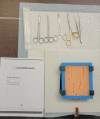
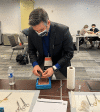

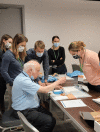

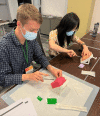


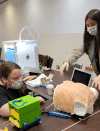
Similar articles
-
Advancing Surgical Precision in Z-Plasty and Melanoma Excision Through Quality Improvement Initiatives in Rural Settings.Cureus. 2024 Nov 14;16(11):e73691. doi: 10.7759/cureus.73691. eCollection 2024 Nov. Cureus. 2024. PMID: 39677097 Free PMC article.
-
Development of Simple and Advanced Adult Proximal Tibia Simulators for a Decentralized Simulation-Based Education Model to Teach Paramedics-in-Training the Intraosseous Infusion Procedure.Cureus. 2022 Oct 31;14(10):e30929. doi: 10.7759/cureus.30929. eCollection 2022 Oct. Cureus. 2022. PMID: 36465780 Free PMC article.
-
The Development and Initial End-Point User Feedback of a 3D-Printed Adult Proximal Tibia IO Simulator.Cureus. 2022 May 30;14(5):e25481. doi: 10.7759/cureus.25481. eCollection 2022 May. Cureus. 2022. PMID: 35800805 Free PMC article.
-
Obstacles and solutions to maintenance of advanced procedural skills for rural and remote medical practitioners in Australia.Rural Remote Health. 2006 Oct-Dec;6(4):502. Epub 2006 Nov 15. Rural Remote Health. 2006. PMID: 17107272 Review.
-
Simulation in endoscopy: Practical educational strategies to improve learning.World J Gastrointest Endosc. 2019 Mar 16;11(3):209-218. doi: 10.4253/wjge.v11.i3.209. World J Gastrointest Endosc. 2019. PMID: 30918586 Free PMC article. Review.
Cited by
-
Identification of a partnership model between a university and not-for-profit organization to address health professions education and health inequality gaps through simulation-based education: A scoping review.PLoS One. 2024 Oct 24;19(10):e0311349. doi: 10.1371/journal.pone.0311349. eCollection 2024. PLoS One. 2024. PMID: 39446748 Free PMC article.
-
Identification of a partnership model between a university, for-profit, and not-for-profit organization to address health professions education and health inequality gaps through simulation-based education: A scoping review protocol.PLoS One. 2023 Jul 10;18(7):e0288374. doi: 10.1371/journal.pone.0288374. eCollection 2023. PLoS One. 2023. PMID: 37428783 Free PMC article.
-
Advancing Surgical Precision in Z-Plasty and Melanoma Excision Through Quality Improvement Initiatives in Rural Settings.Cureus. 2024 Nov 14;16(11):e73691. doi: 10.7759/cureus.73691. eCollection 2024 Nov. Cureus. 2024. PMID: 39677097 Free PMC article.
-
Adapting the Gamified Educational Networking Online Learning Management System to Test a Decentralized Simulation-Based Education Model to Instruct Paramedics-in-Training on the Emergency Intraosseous Access and Infusion Skill.Cureus. 2024 Mar 4;16(3):e55493. doi: 10.7759/cureus.55493. eCollection 2024 Mar. Cureus. 2024. PMID: 38571855 Free PMC article.
-
Hacking Intraosseous Infusion Skills Training With 3D Printing: maxSIMIO Drilling System.Cureus. 2022 Nov 8;14(11):e31272. doi: 10.7759/cureus.31272. eCollection 2022 Nov. Cureus. 2022. PMID: 36514591 Free PMC article.
References
-
- The College of Family Physicians of Canada: Review of family medicine within rural and remote Canada: Education, practice, and policy. [ Jun; 2022 ]. 2016. https://www.cfpc.ca/CFPC/media/Resources/Rural-Practice/ARFM_BackgroundP... https://www.cfpc.ca/CFPC/media/Resources/Rural-Practice/ARFM_BackgroundP...
-
- Simulation in medical education. So HY, Chen PP, Wong GK, Chan TT. J R Coll Physicians Edinb. 2019;49:52–57. - PubMed
LinkOut - more resources
Full Text Sources
